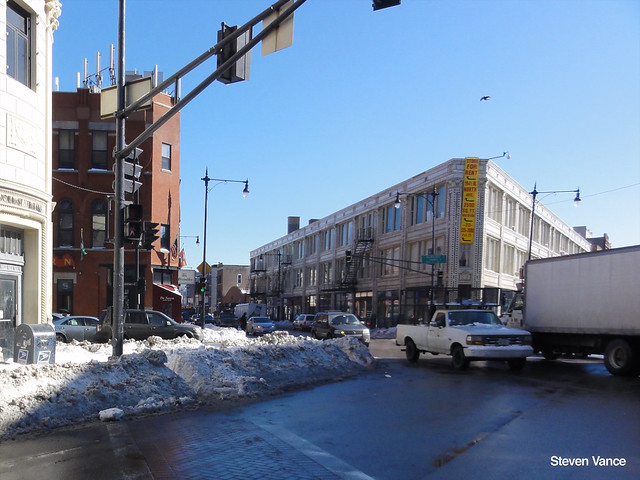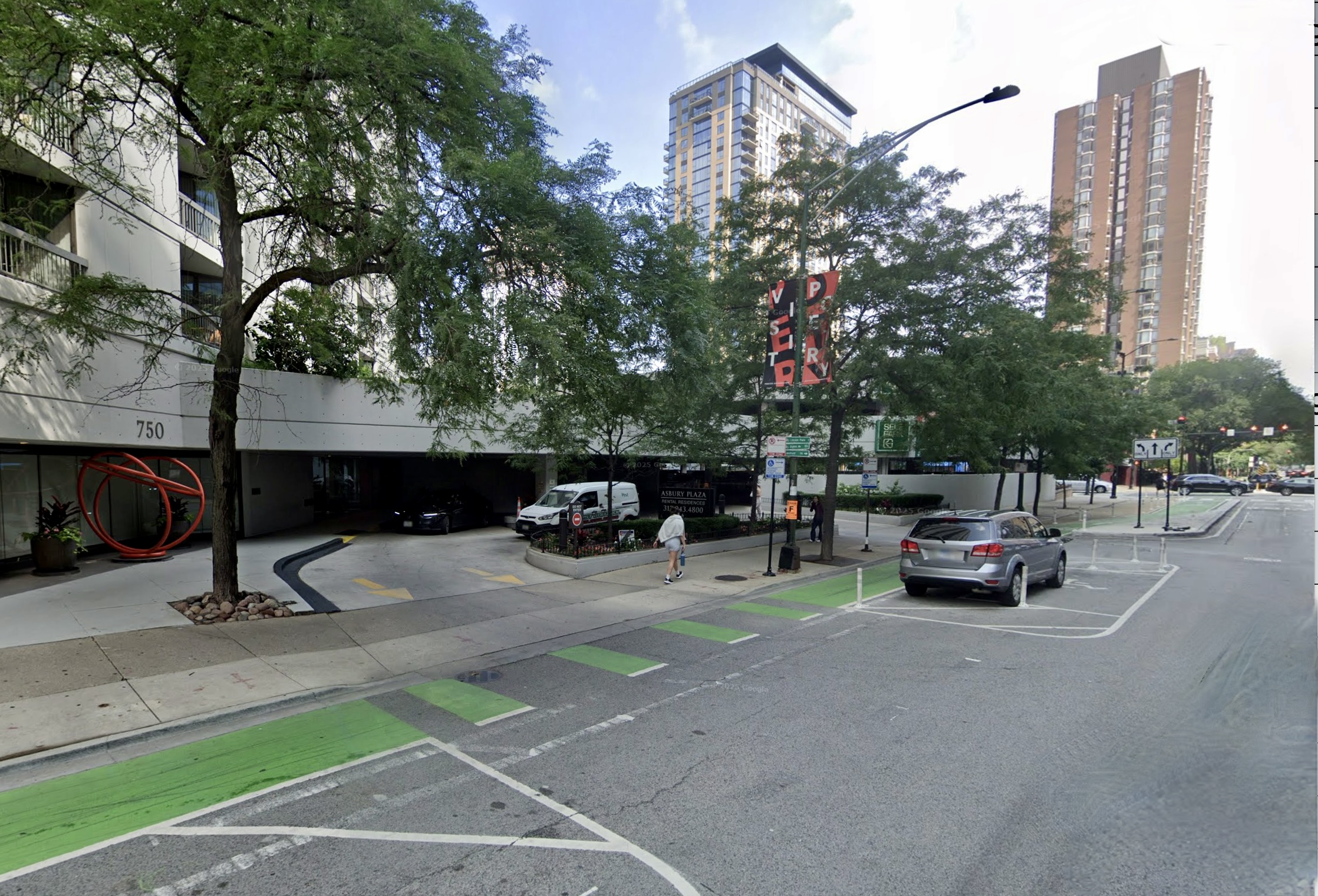
A snowy neckdown -- or "sneckdown" -- is that place in the roadway where the snow sticks around because no one drives over it. Sneckdowns show where there's too much asphalt that could easily be claimed for pedestrian space and traffic calming.
As Angie Schmitt reported for Streetsblog USA, officials in Philadelphia were inspired by a sneckdown to make permanent sidewalk expansions at one intersection. Chicago could do the same in hundreds of locations. Here's one...
Shaun Jacobsen, a Streetsblog contributor, commutes via Union Station and photographed this sneckdown at Canal Street and Adams Street, where there's a lot of pedestrian traffic but an abnormally narrow sidewalk. But when the corner was repaved in 2013, the sidewalk wasn't modified.
Canal Street, which is actually a viaduct, is going to be rebuilt in the coming years, so the Chicago Department of Transportation can take the opportunity to rebuild the street to work better for walking.
In a 2007 downtown pedestrian survey, CDOT counted over 40,000 people walking across the Adams Street bridge between 7:45 a.m. and 5:45 p.m. In a 2006 automobile survey, CDOT counted about 12,000 cars crossing the bridge in 24 hours. While most pedestrians probably entered Union Station before reaching this sidewalk, I think it's still safe to say that at least as many people are walking as are driving at this intersection. And yet, pedestrians get the short end of the stick.
Below is a photo of another sneckdown. It's one of my favorites -- the intersection of Milwaukee, North, and Damen in Wicker Park. It slows turning drivers by tightening the curve.
Got sneckdowns in your neighborhood? Send us your photos and we'll run the best on Streetsblog.




